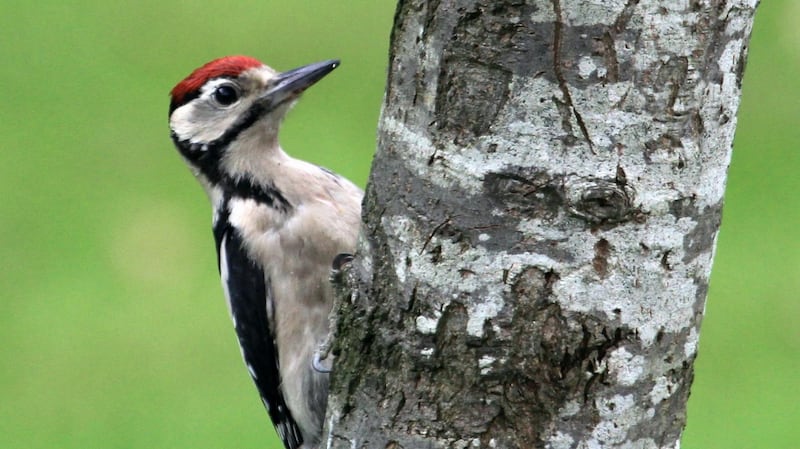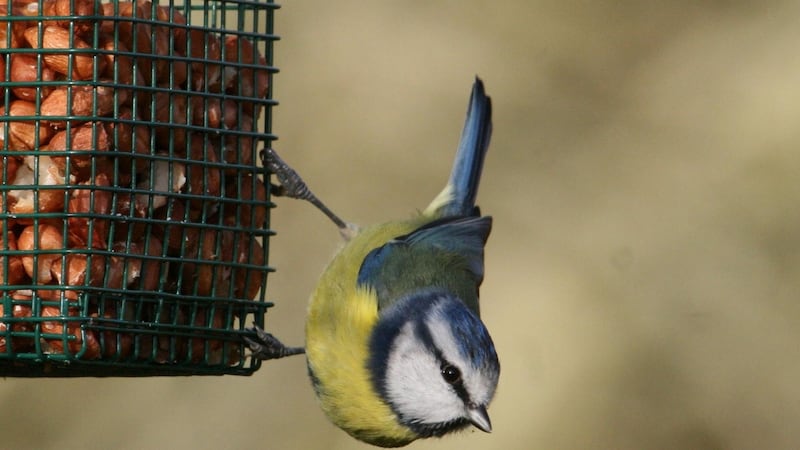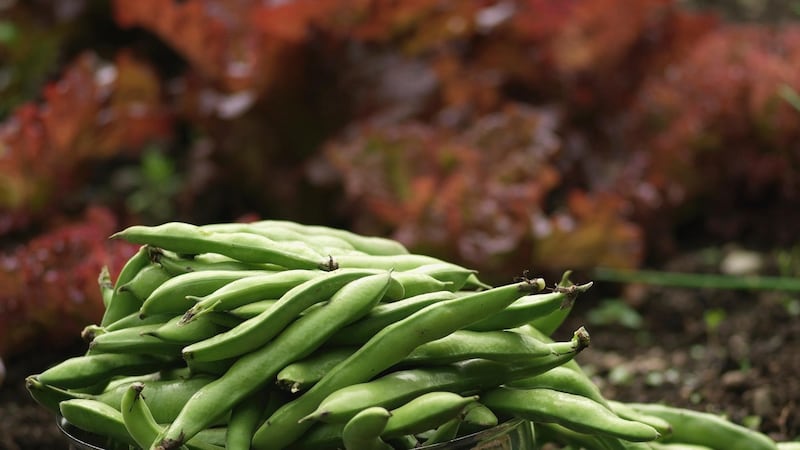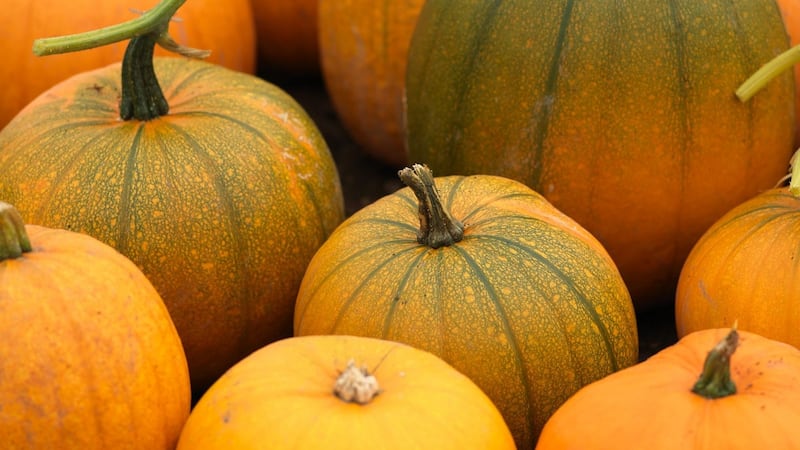The first time I spotted a woodpecker feeding from a peanut feeder in our family garden, I wondered if I was hallucinating.
An agitated flurry of feathers, a brief but vivid splash of scarlet, black and white, and then it was gone. Had I seen a vagabond parrot, I wondered, or was the light playing tricks with my eyesight?
But then, a few days later, it came back again, this time staying just long enough for me to reassure myself it was no figment of my imagination but a greater spotted woodpecker, a species that until a decade ago was known only as a rare winter visitor to this country.
Since my first, somewhat incredulous sighting, these colourful birds have become frequent visitors to our garden each year from mid-spring to early autumn, jauntily scaring other smaller, more common garden species away from the peanut feeders provided so that they can eat in solitary splendour while the finches, tits and siskins cautiously wait their turn.

Watching these sorts of intricate avian pantomimes take place – the careful negotiations as regards the complicated pecking order, the sudden, fierce turf wars to determine territory, the delicately-nuanced mating rituals – is one of the great joys of encouraging birds to visit your garden. They offer us a tiny portal into the world of the wild, and seduce us with their grace and state of perpetual motion while their presence reassures us that all is right with the world of nature as long as they continue to be a part of it.
Now, of course, is the time of year when colder nights, shorter days and dwindling supplies of food from the wild mean that they begin to need our help the most. How to help? The good news is that even a small, habitat-rich suburban garden is capable of hosting up to 25-30 different species of smaller birds in winter, from robins, blackbirds, tits, and magpies to finches, wrens, sparrows, starlings, dunnocks, thrushes and yes, even the occasional woodpecker.
Examples of bird-friendly garden habitats include everything from a native, species-rich hedge and pockets of dense planting to a wall covered with a variety of climbers and shrubs, log piles or a small pond. A lawn or border gently tended without the use of environmentally-noxious weedkillers or metaldehyde-based slug pellets provide plenty of rich pickings in the way of tasty earthworms and insect larvae.
Incorporating a selection of berrying and fruiting shrubs and small trees into the planting scheme such as the native guelder rose (Viburnum opulus), hawthorn, elder, holly, yew, euonymus, pyracantha, sorbus, malus and berberis will also help to provide a diverse range of food for wild birds visiting your garden at this time of year.
Many smaller species of wild birds will also happily feed on the autumn seedheads of faded perennials and ornamental grasses as well as common garden weeds such as dock, yet another reason to avoid being too tidy-minded when it comes to cutting back plants in autumn.

Nest boxes
Now is also an excellent time to put up nest boxes, bearing in mind that their design and in particular the dimensions of the opening provided is very important as regards the particular species of bird willing to nest in it. If in doubt, source these from Birdwatch Ireland (birdwatchireland.ie) or from Irish Garden Birds ( irishgardenbirds.ie) whose nesting boxes take this into careful consideration.
How and where you situate any nest box is also crucial. Some species including blue tits, great tits and sparrows prefer theirs to be at a height while other, for example, robins, coal tits and wrens, like them to be less than 2m above ground level. While a few species will happily tolerate a nest box sited in an open spot, many, for example, robins and blackbirds, much prefer a hidden, shadier, leafier location out of clear sight.
Whatever the species, try to situate any nesting boxes so they are sheltered from prevailing winds, out of bright sunlight and tilted slightly forward to prevent rain reaching inside.
As wild birds are naturally very territorial, it’s also important to place nesting boxes at a distance (no less than 7-10m ) from any bird feeders or bird tables to avoid turf wars breaking out. As for these feeding stations themselves, a birdtable hung with wire-mesh peanut feeders, suet balls and apples and sprinkled with pinhead oatmeal, sunflower seeds and mealworms will attract a wide variety of species. But always keep hygiene in mind to avoid the spread of disease and scrub it down regularly, making sure to regularly disinfect feeders also by dunking them in boiling hot water.
For many more useful tips on how to make your garden as bird-friendly as possible, visit the website of Birdwatch Ireland (birdwatchireland.ie) or the website of expert ornithologists and authors Oran O'Sullivan and Jim Wilson (irishgardenbirds.ie) whose classic guidebook on the subject, Ireland's Garden Birds: A Guide to Attracting and Identifying Garden Birds (€14.99), has just been re-issued by Cork-based Collins Press.
This Week in the Garden
Beans
October is a great month to sow broad beans, which will happily overwinter in milder gardens. Either sow seed directly into the ground or into root-trainers for transplanting once the young seedlings have developed a strong root system. Recommended varieties include Aquadulce Claudia (from Leitrim-based greenvegetableseeds.com) and the heritage "Crimson Flowered" (from Cork-based brownenvelopeseeds.com). If your garden is a cold or exposed one, then field beans are a smaller, hardier, high-yielding relative of broad beans. In particular, look out for the ultra-hardy, long-cropping, flavoursome variety known as "Wizard" (from realseeds.co.uk)

Herbaceous perennials
Most early summer-flowering herbaceous perennials can be lifted and divided at this time of year as a way of easily increasing stock of favourite plants. Dividing old, congested clumps also improves vigour and flowering performance. The traditional method is to dig up the established clump and plunge two garden forks back to back into its centre, then slowly lever them away from each other to separate the clump into two smaller clumps. Repeat as required before quickly replanting the resulting divisions into well-prepared holes enriched with a little garden compost and then water well.
Pumpkins
It's time to bring pumpkins and squash under cover of a sunny porch, polytunnel or glasshouse so that the fruit can complete the ripening process uninterrupted by a harsh autumn frost. If you're planning to carve a few pumpkins this Halloween, remember that the sweet, juicy flesh hollowed out of them can be put aside to make a delicious, seasonal soup while the edible seeds can be roasted in an oven to make a tasty snack.

Dates For Your Diary
Wednesday, October 18th (8pm), Airfield Estate, Overend Way, Dundrum, Dublin 14: Floral Art Demonstration by Beatrice Hartog. Admission free to RHSI members, €10 to non-members, see rhsi.ie.
Saturday,October 21st (12pm-4pm), Marino Institute of Education, Griffith Avenue, Dublin 3: The Irish Garden Plant Society (Leinster Branch) Plant Sale, with many rare heritage Irish plants and other horticultural treats for purchase, irishgardenplantsociety.com.
Sunday, October 22nd (10am-1pm), Dalkey Garden School, Mornington, Saval Park, Dalkey, as part of Dalkey Creates festival, "The Magic of Flowers" , a half-day workshop with @TheIrishFlowerFarmer (aka Fionnuala Fallon) showing how to grow and arrange your own seasonal cut-flowers using sustainable, organically-approved methods, from €45, pre-booking essential, dalkeycreates.com.












